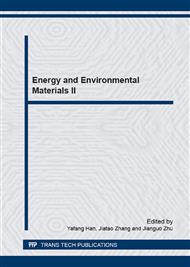p.552
p.559
p.564
p.569
p.574
p.579
p.583
p.590
p.596
Preparation of Silicon Carbide Reticulated Porous Ceramics by Organic Foam Impregnation
Abstract:
Silicon carbide (SiC) reticulated porous ceramics were prepared by organic foam impregnation, using polyurethane sponges as template and deionized water or alcohol as slurry solvent. The sintering behavior, microstructures and apparent density of struct of the SiC reticulated porous ceramics fabricated using the aqueous slurry under different sintering aids and sintering process and the alcohol slurry were investigated comparatively. The experimental results showed that both the microstructures and apparent density of the samples fabricated by Y2O3+AlN as sintering aid were better than those Al2O3 as sintering aid while the aqueous slurry, and the samples fabricated by two-step process (firstly heated to 700 oC in air furnace, and then sintered at 1800 oC in Ar atmosphere) while Y2O3+AlN as sintering aid obtained the optimal properties. In particular, the samples fabricated by the alcohol slurry and reaction sintering process were provided better properties than the aqueous slurry.
Info:
Periodical:
Pages:
574-578
Citation:
Online since:
March 2015
Price:
Сopyright:
© 2015 Trans Tech Publications Ltd. All Rights Reserved
Share:
Citation:


